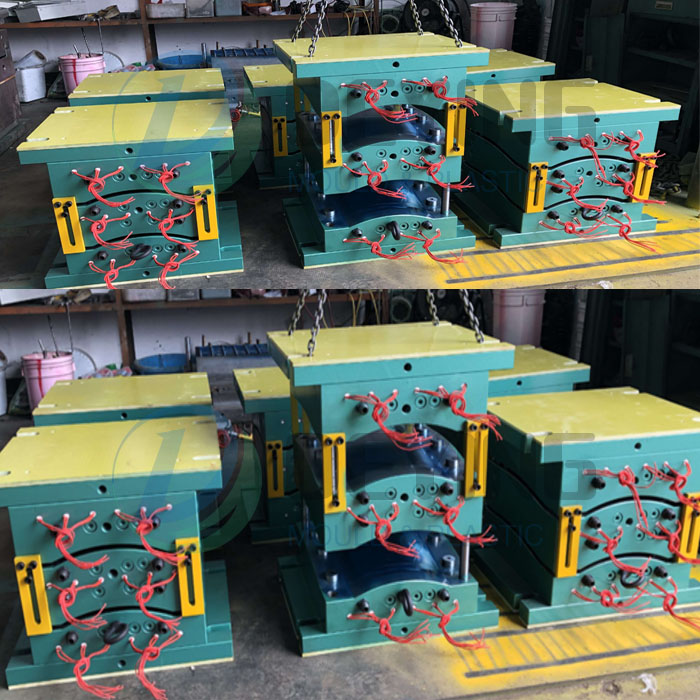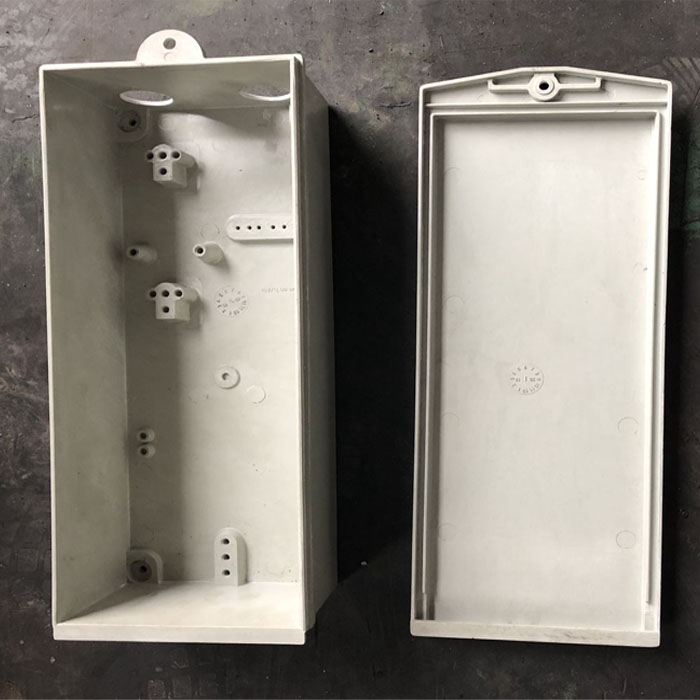Compression moulding normally uses a hydraulic press in which a moulding tool is fixed to top and bottom platens of the press. The moulding tool consists of a top cavity and bottom cavity, designed to produce the part to be manufactured and heated to the required moulding temperature. Once the materials of choice are placed into the open mould, the press closes to apply an agreed pressure designed to force the material to flow within the cavities of the mould. The moulding cycle continues to maintain heat and pressure until the polymer has cured and the part moulded. Once moulded it is removed from the tool and trimmed to provide a finished part.
Compression moulding is often associated with Sheet Moulding Compound (known as SMC), Bulk Moulding Compound (known as BMC) and Long Glass Fibre Polypropylene (known as LGFP). The materials all use long glass fibre as its reinforcement and have been formulated to meet specific performance levels required for the part to be produced. They are ideal replacements for metal, aluminium, concrete and timber components.
A high-pressure moulding process, compression moulding produces high strength, lightweight and complex parts in a variety of sizes. The tooling utilises matched metal moulds which are mounted in a hydraulic or mechanical moulding press and the material of choice is placed by robotics or hand in the open mould. The heated moulds once closed, apply pressure between 7 and 20 MPa. This will be based on the materials chosen and the part to be produced. Cycle time will also depend on part size, design and thickness, and ranges from one to five minutes. Features such as ribs, bosses, inserts and attachments can also be moulded using this technology.


Compression Molding is a process in which a molding polymer is squeezed into a preheated mold taking a shape of the mold cavity and performing curing due to heat and pressure applied to the material.
The method is used mostly for molding thermosetting resins (thermosets), but some thermoplastic parts may also be produced by Compression Molding.
Compression Molding process involves the following steps:
1) .A pre-weighed amount of a polymer mixed with additives and fillers (charge) is placed into the lower half of the mold.
The charge may be in form of powders, pellets, putty-like masses or pre-formed blanks.
The charge is usually preheated prior to placement into the mold. Preheated polymer becomes softer resulting in shortening the molding cycle time.
2) .The upper half of the mold moves downwards, pressing on the polymer charge and forcing it to fill the mold cavity.
The mold, equipped with a heating system, provides curing (cross-linking) of the polymer (if thermoset is processed).
3) .The mold is opened and the part is removed from it by means of the ejector pin.
If thermosetting resin is molded, the mold may be open in hot state – cured thermosets maintain their shape and dimensions even in hot state.
If thermoplastic is molded, the mold and the molded part are cooled down before opening.
MB/Wechat/Whatsapp:+0086-13456489912
sophiemould@foxmail.com


Post time: Jul-01-2021
